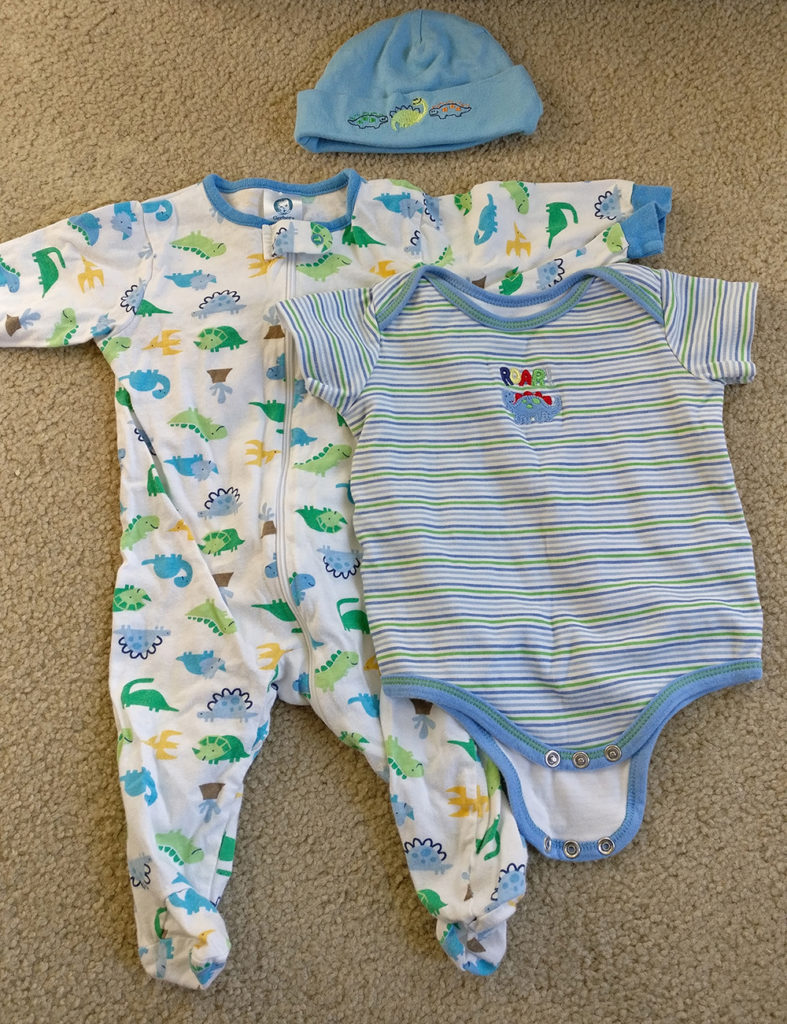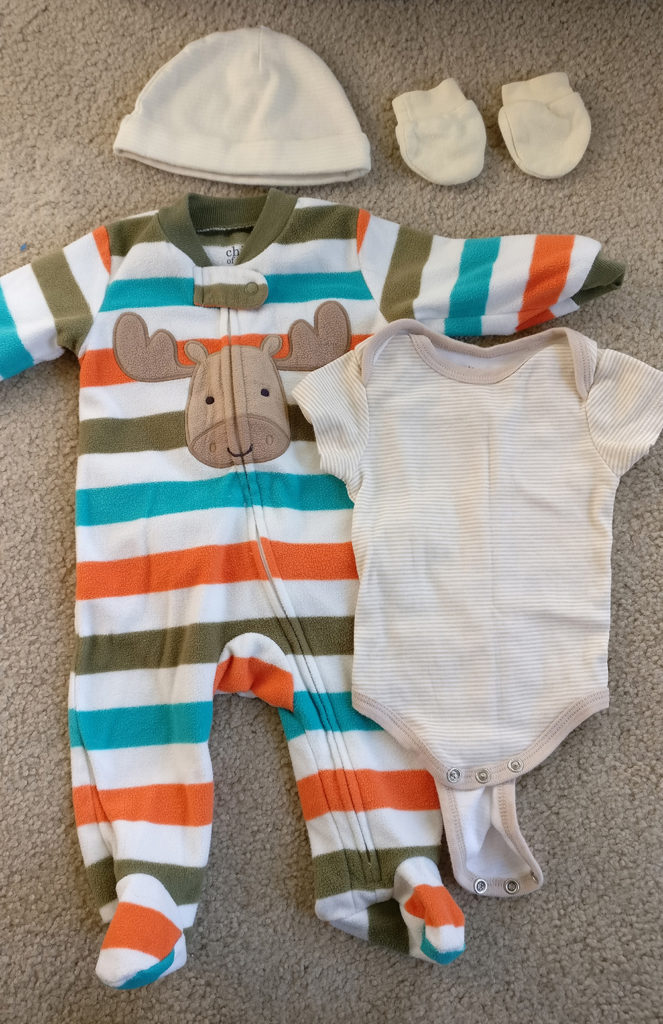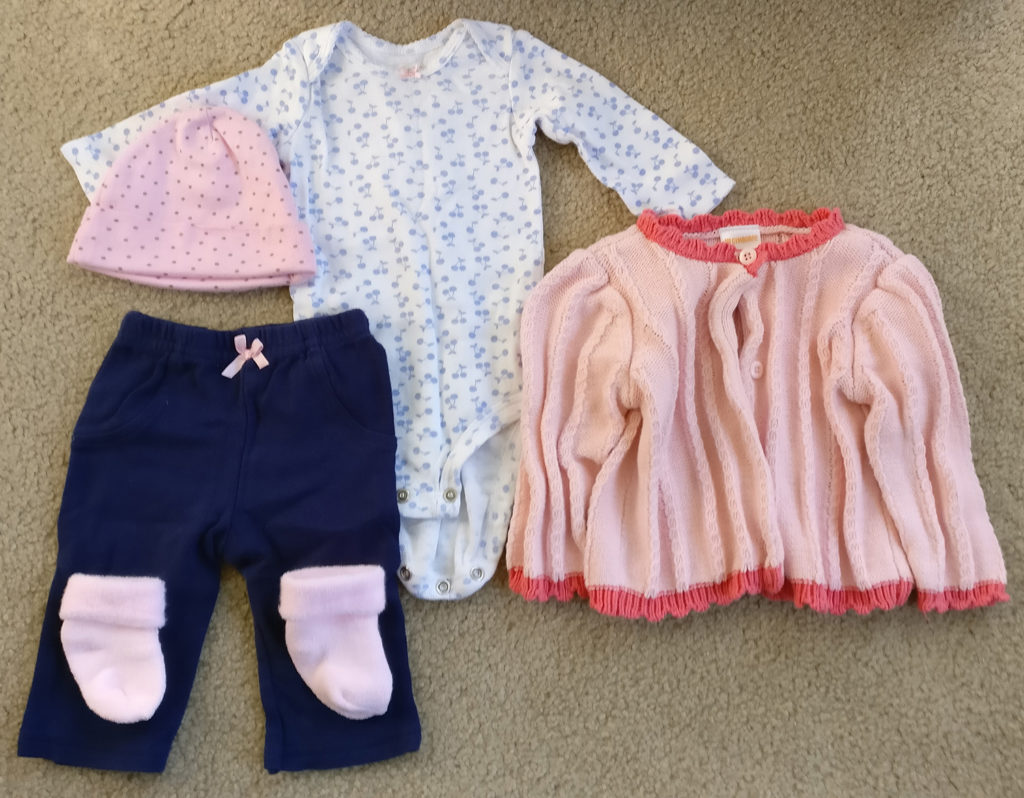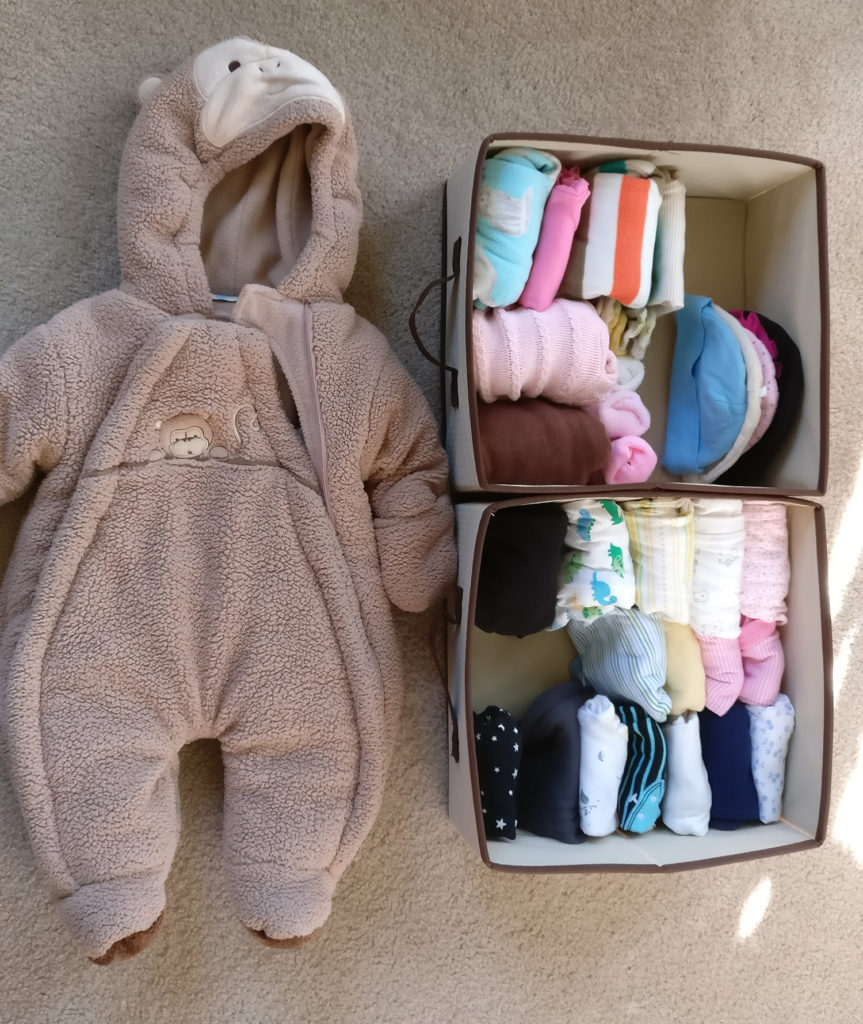Simple Sustainability: A minimalist baby wardrobe
by Sky Trombly –

New parents tend to buy too many baby clothes. A few factors play into this: baby clothes are irresistibly cute (and may arrive as unexpected gifts) and it is difficult, especially as a new parent, to know how many clothes any particular baby will go through.
The result is that the collection is often so large that the baby outgrows outfits before they are ever worn. This results in household clutter and money waste, but it also has a huge global impact. The impact involves, but is not limited to:

− growing our cotton
(a pesticide laden crop);
− manufacture of our clothes
(and the social injustices that come to play when we outsource cheap labor);
− disposal of clothes that don’t break down in landfills and litter other nations.
The impact of what we use in baby’s first year will likely outlive them. A good documentary to watch about the impact of the clothing industry is called The True Cost (2015).
In the first year alone, a baby could potentially grow out of 6 wardrobes (preemie, newborn, 0-3 months, 3-6 months, 6-9 months, 9-12 months).
What can we parents do?

Firstly, we can buy used clothing or accept hand-me-downs whenever possible. If you don’t have a thrift store or a used baby gear store near to you, you could consider online sources such as eBay and click on the “used” search criteria.
But even if you can’t or won’t buy used for whatever reason, you can slash your negative impact by getting really clear about what you want for your baby’s uniform and buying a lot less overall.

To that end, I created a Fall/Winter uniform for my own baby that I hope can be used as a template or inspiration for like-minded parents. Keep in mind, numbers will vary depending on your wash cycle. Assume that nothing except the hats and winter body suit will be worn more than once between washes. This number makes it easy to do washes every 4 days, but could be stretched to once a week if nighttime outfits are re-worn or the number of nighttime outfits is increased. This basic format should work for cooler weather for up to 2-year-olds with only minor adjustments.
Here is baby Laura’s
(0-3 months)
Fall / Winter Wardrobe:
− 4 terry cotton or fleece “sleep and plays”, ideally the zippered kind that contain feet (ages newborn-9 months). My older kids started walking at 9 months at which point footless “sleep and plays” paired with socks may be safer or more comfortable. These, plus a “onesie” and hat, make up the nighttime uniform.
− 6 cotton “sleep and plays”, ideally the zippered variety with feet for newborn to 9 month sizes
− 10 short-sleeved “onesies”/”bodysuits”, plain white or patterned (these are a bottom layer and should have no excessive or finicky snaps or parts. I find the short-sleeved ones are easier to fit under a layer that has long-sleeves and may last longer as a baby ages.
− 4 long-sleeved “onesies”/”bodysuits”. These are outfit tops. The snaps in the diaper area keep the shirt in place and prevent bare tummies.
− 4 pants, plain is usually better as patterned tops are really common, but just keep outfit pairings in mind. These are the outfit bottoms.
− 1-2 sweaters/hoodies
− 2-4 hats
− 4 pairs of socks
− 1-4 scratch mittens
(not necessary for babies older than 3 months)
− 1 warm all-in-one winter body suit. Ideally has hood, feet, and mittens built in and a crotch so that it can be worn with a car seat.
Additionally, I keep some headbands on hand for my daughter and a few (I cap it at 5) special outfits. These aren’t a part of the uniform, are usually gifts, and are often used for pictures, holidays, or other special occasions as they tend to be less than practical.
For babies who can walk, shoes should be added to the list. Shoes before a baby can walk are purely decorative and highly annoying.
“We Do Not Inherit the Earth from Our Ancestors;
We Borrow It from Our Children” – Origin Unknown
I just wanted to leave you with this quote as a reminder that our babies will not remember or care what they wear in their first year. But they will be learning from our behavior going forward.